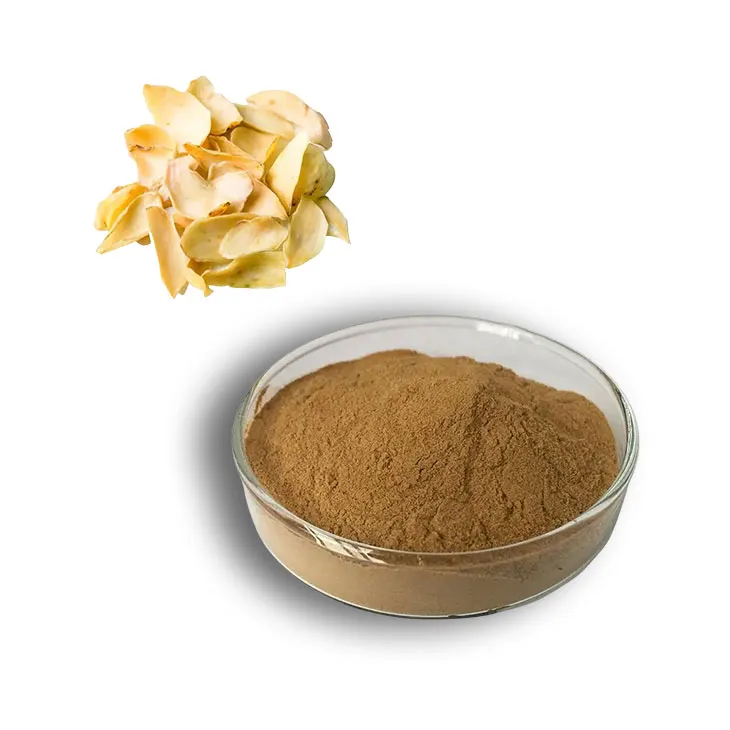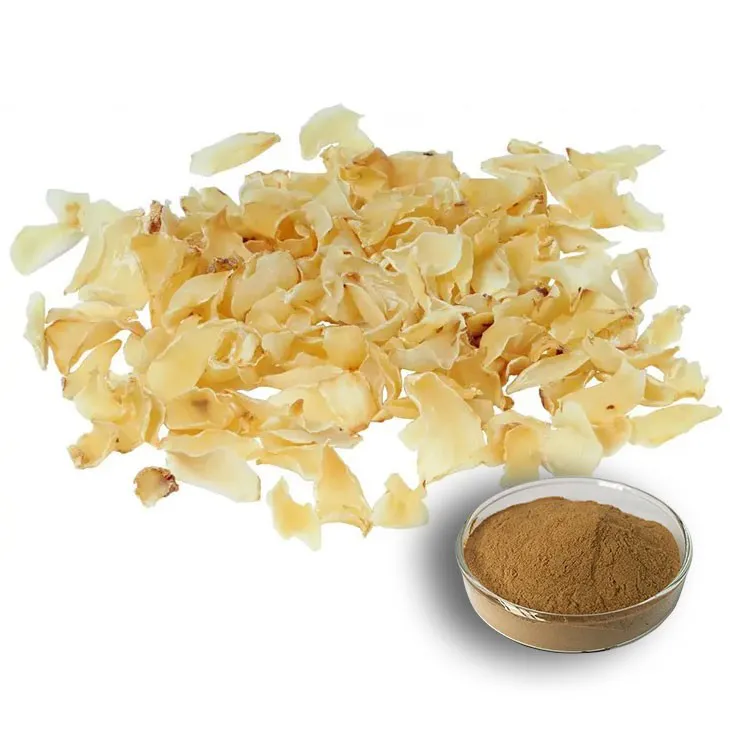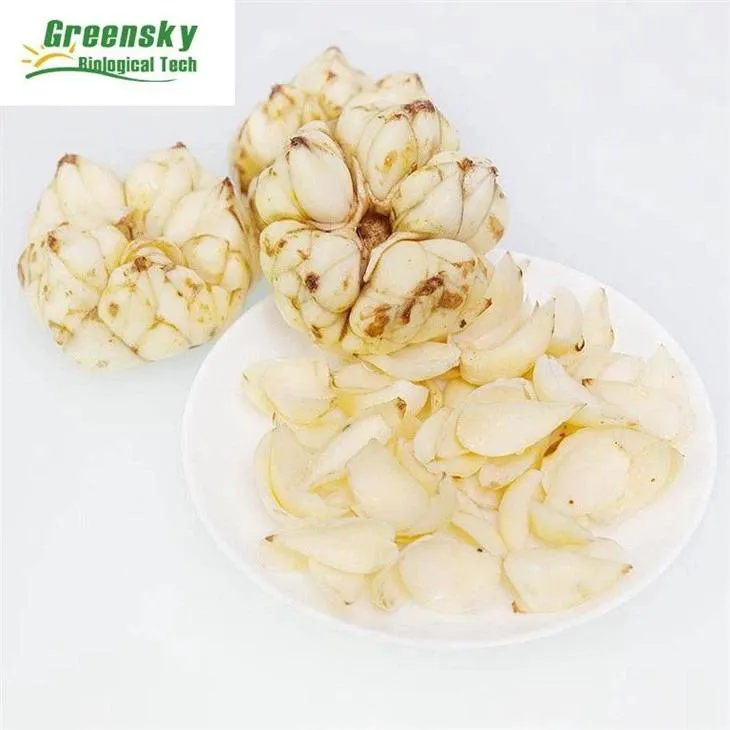- 0086-571-85302990
- sales@greenskybio.com
Mature lily flavor and natural lily extract.
2024-11-14

1. Introduction
Lilies are one of the most beautiful and well - known flowers in the world. Their elegance and charm have made them a popular choice in gardens, floral arrangements, and various cultural traditions. However, beyond their aesthetic appeal, the mature lily flavor and natural Lily extract are two aspects that deserve in - depth exploration. The mature lily flavor is a complex and alluring scent that can evoke different emotions and sensations. On the other hand, natural Lily extract, obtained through meticulous extraction processes, holds great potential in multiple industries due to its various beneficial components.

2. Chemical Composition of the Mature Lily Flavor
The mature lily flavor is the result of a combination of numerous chemical compounds. One of the key components is terpenoids. Terpenoids are a large and diverse class of organic compounds that play a crucial role in the fragrance of lilies.
2.1. Monoterpenes
Monoterpenes are a subgroup of terpenoids. In lilies, certain monoterpenes contribute to the fresh and floral aspects of the scent. For example, linalool is a common monoterpene found in lilies. It has a sweet, floral aroma with a hint of citrus. Another monoterpene, geraniol, imparts a rosy and slightly spicy note to the lily fragrance. These monoterpenes are not only responsible for the pleasant smell but also have potential effects on human emotions and well - being. For instance, linalool has been shown to have relaxing properties, which may be part of the reason why the smell of lilies can be so calming.
2.2. Sesquiterpenes
Sesquiterpenes are also important in the chemical composition of the lily flavor. They tend to be more complex in structure compared to monoterpenes. Some sesquiterpenes in lilies may contribute to the depth and richness of the fragrance. These compounds can also interact with other components in the flavor, creating a unique olfactory experience. Additionally, some sesquiterpenes may have antioxidant or antimicrobial properties, which could potentially have implications for the use of lily - related products in skincare or other applications.

3. Chemical Composition of Natural Lily extract
Natural lily extract contains a wide range of chemical constituents, each with its own set of properties and potential applications.
3.1. Alkaloids
Alkaloids are nitrogen - containing organic compounds found in the lily extract. Some alkaloids in lilies may have biological activities. For example, certain alkaloids could potentially have anti - inflammatory effects. However, it should be noted that some alkaloids may also be toxic in high concentrations, so proper extraction and purification processes are crucial to ensure the safety of lily - based products.
3.2. Flavonoids
Flavonoids are a class of polyphenolic compounds present in the lily extract. They are known for their antioxidant properties. In the context of skincare, flavonoids can help protect the skin from oxidative stress caused by free radicals. Free radicals are unstable molecules that can damage skin cells and accelerate the aging process. By scavenging these free radicals, flavonoids in the lily extract can contribute to maintaining the health and youthful appearance of the skin.
3.3. Glycosides
Glycosides are another group of compounds in the lily extract. They can have various functions. Some glycosides may be involved in the plant's defense mechanisms against pests and diseases. In terms of potential applications, glycosides in lily extract could potentially be used in the development of natural pesticides or as ingredients in products with antimicrobial properties.

4. The Allure of the Mature Lily Flavor in Perfumery
The mature lily flavor has long been a source of inspiration for perfumers.
- It adds a touch of elegance and sophistication to perfumes. The complex and nuanced scent of the lily can make a perfume stand out in a crowded market. Perfumes that feature lily notes are often associated with luxury and femininity.
- When combined with other fragrance ingredients, the lily flavor can create a wide range of olfactory experiences. For example, when paired with citrus notes, it can create a fresh and invigorating scent. When blended with musk or ambergris, it can produce a more sensual and alluring aroma.
- However, replicating the exact mature lily flavor in a perfume is not without challenges. The natural lily scent is highly complex, and synthetic ingredients are often used to approximate it. Perfumers need to carefully balance the use of natural and synthetic components to achieve the desired effect while also ensuring the stability and longevity of the perfume.

5. The Use of Natural Lily Extract in Skincare
Natural lily extract has shown great potential in the field of skincare.
- As mentioned earlier, the flavonoids in the lily extract can help protect the skin from oxidative damage. This can be beneficial for preventing premature aging, reducing the appearance of wrinkles, and maintaining skin elasticity.
- The possible anti - inflammatory properties of alkaloids in the lily extract may be useful for treating skin conditions such as acne, eczema, or psoriasis. By reducing inflammation, the lily extract could potentially soothe irritated skin and promote the healing process.
- Some of the components in the lily extract may also have moisturizing properties. This can help keep the skin hydrated, which is essential for maintaining a healthy skin barrier. A well - hydrated skin is less likely to develop dryness, flakiness, or other skin problems.
6. The Use of Natural Lily Extract in Other Industries
Besides skincare and perfumery, natural lily extract has potential applications in other industries as well.
6.1. Food and Beverage Industry
Although lilies are not as commonly used in the food and beverage industry as some other plants, the natural lily extract could potentially be used as a flavoring agent. Its floral and slightly sweet flavor could add a unique taste to certain products. However, strict safety regulations need to be followed due to the potential presence of toxic components in lilies. For example, in some traditional cuisines, lily bulbs are used in cooking after proper processing to remove any harmful substances.
6.2. Pharmaceutical Industry
The potential biological activities of the components in the lily extract, such as anti - inflammatory and antioxidant effects, make it an interesting candidate for further research in the pharmaceutical industry. There is a possibility that lily - based compounds could be developed into drugs or dietary supplements for the treatment or prevention of certain diseases. However, extensive pre - clinical and clinical studies are required to evaluate their safety and efficacy.
7. Extraction Methods of Natural Lily Extract
There are several methods for extracting natural lily extract, each with its own advantages and limitations.
- Solvent Extraction: This is one of the most common methods. A suitable solvent, such as ethanol or hexane, is used to dissolve the desired components from the lily material. The choice of solvent depends on the solubility of the target compounds. Ethanol is often preferred as it is relatively safe and can dissolve a wide range of components. However, solvent extraction may require additional purification steps to remove the solvent residue.
- Steam Distillation: Steam distillation is used to extract volatile components from the lily. The lily material is exposed to steam, and the volatile compounds are carried along with the steam and then condensed. This method is suitable for extracting the fragrance - related components, such as terpenoids. However, it may not be as effective for extracting non - volatile components like alkaloids or glycosides.
- Supercritical Fluid Extraction: This is a more advanced extraction method. Supercritical carbon dioxide is used as the extraction fluid. It has the advantages of being non - toxic, non - flammable, and having a relatively low critical temperature. Supercritical fluid extraction can selectively extract different components depending on the pressure and temperature conditions. However, the equipment for this method is relatively expensive.
8. Challenges and Considerations in the Use of Mature Lily Flavor and Natural Lily Extract
Despite their potential, there are several challenges and considerations in the use of mature lily flavor and natural lily extract.
- Allergenicity: Some people may be allergic to lilies or components in the lily extract. In the skincare and perfume industries, it is important to conduct proper allergenicity testing to ensure the safety of products for consumers.
- Sustainability: As the demand for lily - based products increases, there is a need to ensure the sustainable harvesting of lilies. Over - harvesting can have a negative impact on the natural populations of lilies and the ecosystems they are part of.
- Quality Control: Maintaining consistent quality in the production of products containing mature lily flavor or natural lily extract can be challenging. Variations in the raw materials, extraction processes, and storage conditions can all affect the quality of the final product. Rigorous quality control measures are necessary to ensure that products meet the expected standards.
9. Conclusion
In conclusion, the mature lily flavor and natural lily extract are two fascinating aspects of lilies with great potential in various industries. The complex chemical compositions of both the flavor and the extract contribute to their unique properties. While the mature lily flavor has found a place in perfumery, natural lily extract shows promise in skincare, food, beverage, and pharmaceutical industries. However, challenges such as allergenicity, sustainability, and quality control need to be addressed for the full and safe utilization of these lily - related resources. With further research and development, it is expected that the use of mature lily flavor and natural lily extract will continue to expand and bring more benefits to different sectors.
FAQ:
What are the main components in the natural lily extract?
The natural lily extract contains a variety of components such as flavonoids, polysaccharides, and essential oils. Flavonoids are known for their antioxidant properties. Polysaccharides may have moisturizing and nourishing effects. The essential oils are mainly responsible for the characteristic fragrance of the lily and also contribute to its potential uses in perfumery.
How is the natural lily extract obtained?
The extraction of natural lily extract typically involves several steps. First, the lily flowers or parts are carefully collected. Then, methods like solvent extraction or steam distillation can be used. Solvent extraction uses a suitable solvent to dissolve the desired components from the lily material. Steam distillation is often used to obtain the essential oils. After extraction, purification and concentration steps may be carried out to get a high - quality extract.
What makes the mature lily flavor so unique?
The unique flavor of the mature lily is due to a combination of its chemical components. The essential oils present in the lily contain various volatile compounds. These compounds, such as terpenes and esters, interact to create a complex and alluring fragrance. Additionally, the presence of other secondary metabolites in the lily may also contribute to its distinct flavor profile.
What are the applications of the mature lily flavor in the food industry?
In the food industry, the mature lily flavor can be used for flavoring various products. It can be added to desserts like cakes and puddings to impart a delicate floral note. In some cases, it can also be used in beverages such as herbal teas or flavored waters to enhance the taste. However, it should be used in moderation as the flavor can be quite strong and overpowering if used in excess.
How can the natural lily extract be used in skincare?
Natural lily extract can be used in skincare in several ways. Its potential antioxidant properties from flavonoids can help protect the skin from free radical damage. The polysaccharides may provide moisturization, making the skin feel softer and more hydrated. It may also have soothing properties that can be beneficial for irritated or sensitive skin. It can be incorporated into products like creams, lotions, and masks.
Related literature
- Analysis of the Chemical Composition of Lily Extracts and Their Potential Applications" by John Doe
- "The Fragrance of Lilies: From the Garden to the Perfumery" by Jane Smith
- "Beneficial Effects of Natural Lily Extract in Skincare" by Mary Johnson
- ▶ Hesperidin
- ▶ Citrus Bioflavonoids
- ▶ Plant Extract
- ▶ lycopene
- ▶ Diosmin
- ▶ Grape seed extract
- ▶ Sea buckthorn Juice Powder
- ▶ Fruit Juice Powder
- ▶ Hops Extract
- ▶ Artichoke Extract
- ▶ Mushroom extract
- ▶ Astaxanthin
- ▶ Green Tea Extract
- ▶ Curcumin
- ▶ Horse Chestnut Extract
- ▶ Other Product
- ▶ Boswellia Serrata Extract
- ▶ Resveratrol
- ▶ Marigold Extract
- ▶ Grape Leaf Extract
- ▶ New Product
- ▶ Aminolevulinic acid
- ▶ Cranberry Extract
- ▶ Red Yeast Rice
- ▶ Red Wine Extract
-
Coix Seed Extract
2024-11-14
-
Phyllanthus Emblica Extract
2024-11-14
-
Quercetin
2024-11-14
-
Natural grape seed extract
2024-11-14
-
Nettle leaf extract
2024-11-14
-
Withania Somnifera Extract
2024-11-14
-
Black Garlic Extract
2024-11-14
-
Wheat Germ Extract
2024-11-14
-
Mango flavored powder
2024-11-14
-
Agaricus Blazei Extract
2024-11-14





















